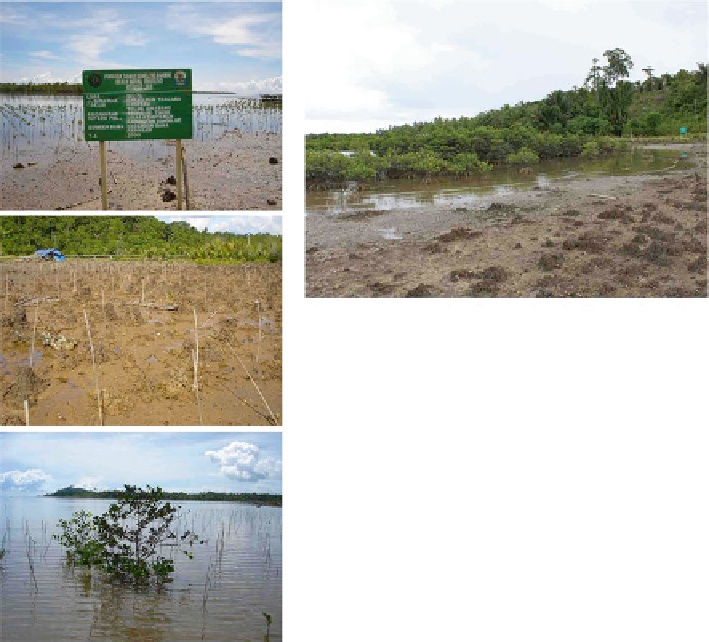Environmental Engineering Reference
In-Depth Information
expedite the process before permanent alterations to the landscape (infrastructure
development) were made. A baseline survey was also called for, to determine natural
recruitment rates in Eastern Simeulue at an area known as Teupah Selatan.
In terms of government policy, mangrove rehabilitation in Indonesia is planned
and budgeted for annually, in each province and coastal district. Processes include
site selection, community awareness building, nursery development and planting at
1 m - spacings (BPDAS and South Sulawesi
2013
). All activities are to take place
within a single year. Monitoring occurs within 3 months after planting. Two such
government planting practices were observed in Simeulue and Singkil during the
timing of the ARC and CADRE projects. A 2005 forestry department planting event
in Linggi Village, Simeulue promoted 100 ha of direct planting. One year after the
event, only 0.5 ha of planted mangroves are evident (Fig.
19.5
). Government offi cials
Fig. 19.5
Mangrove planting at Linggi Village, Simeulue. Out of 100 ha planted in 2005 only 1 ha
of seedlings were evident in 2006 (
upper left
). Wooden stakes are the only remnant of around fi ve
additional hectares of wrongly planted
R. appiculata
at the landward edge of the intertidal zone
were the species cannot grow (
middle left
). In the
bottom lower
picture thriving natural recruits of
S. caseolaris
are found amongst a graveyard of dead planted
R. apiculata
. Pioneers species such as
S. caseolaris
should be consider for human assisted propagule distribution, to colonize appropriate

Search WWH ::

Custom Search